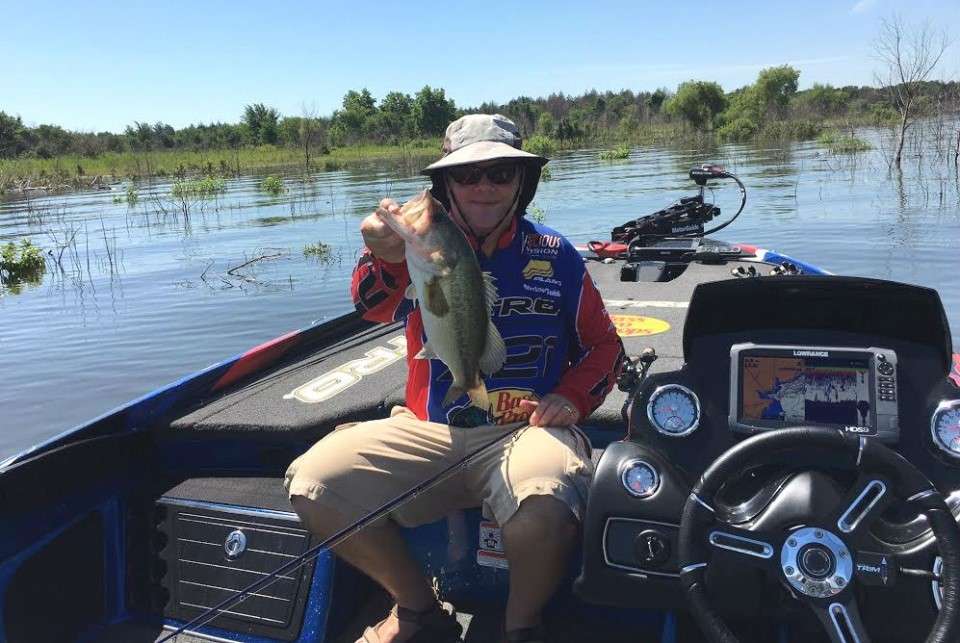
As the days become shorter and the water temperatures begin to cool in most parts of the country, many bass anglers reach for a crankbait to catch some late season action. Elite Series pro Brian Snowden has some tips when it comes to late summer and early fall crankbait tactics that are applicable from coast to coast.
“Successful crankbait fishing depends largely on water temperature and clarity and in understanding the dynamics associated with each,” says Snowden. During the peak of the summer heat, Snowden vacates deep ledges and river channels and begins to target isolated flats where bass are chasing large schools of baitfish. Often located at the mouth of a river, Snowden will follow the flat until it begins to bottleneck. “The hotter it gets, the further back into a river I like to go — but only until the river really narrows down,” he explains. “This time of the year, a shallow running crankbait in these areas will outproduce a spinnerbait.”
Snowden says that in mid to late summer, the bass are aggressive and willing to chase down a meal in the shallows. Targeting flats in 1 to 5 feet of water, Snowden will begin fancasting a shallow diving crankbait like a Cotton Cordell Big “O,” searching for schools of baitfish. The Big “O” not only moves a great amount of water but also provides a large profile for the bass to key on.
“I know anglers who have won a lot of money fishing crankbaits in less than 5 feet of water this time of year,” he says. “I really believe in the technique.”
Snowden’s fall crankbait pattern begins once the water reaches the mid to low 70s. Early in the fall, he will still target the same shallow, isolated flats he did in late summer, but, in addition, he will follow them “all the way back to where the creek or river makes its first major swing.”
During the early fall bite, bottom composition becomes increasingly important for Snowden. “As the water cools, bass start looking for subtle changes in bottom contour,” he explains. “It seems that shad this time of the year are moving away from the shallower clay flats onto gravel bottom flats farther up the creek and the bass are following them out.”
When targeting these bass, Snowden fishes a 1/2-ounce Cordell Spot or a Bomber 6A crankbait. The Missouri pro also focuses on making casts around schools or balls of baitfish.
Later in the fall, as the water temperatures continue to drop, Snowden targets the 4- to 8-foot range but pays close attention to the location of the baitfish. “You’re going to be looking for balls of shad. The key thing to remember is to fish where the bait is. If some forage isn’t present, you need to go in search of it,” he stresses.
When bass are holding in that 4- to 8-foot range, Snowden prefers a silver or gold Cordell Spot depending on water clarity — silver when it’s sunny or the water is clear, and gold in stained water or under cloudy conditions.
By following Snowden’s late summer and fall patterns, you can cash in on some late season bass with a shallow crankbait.
Originally published August 2008




